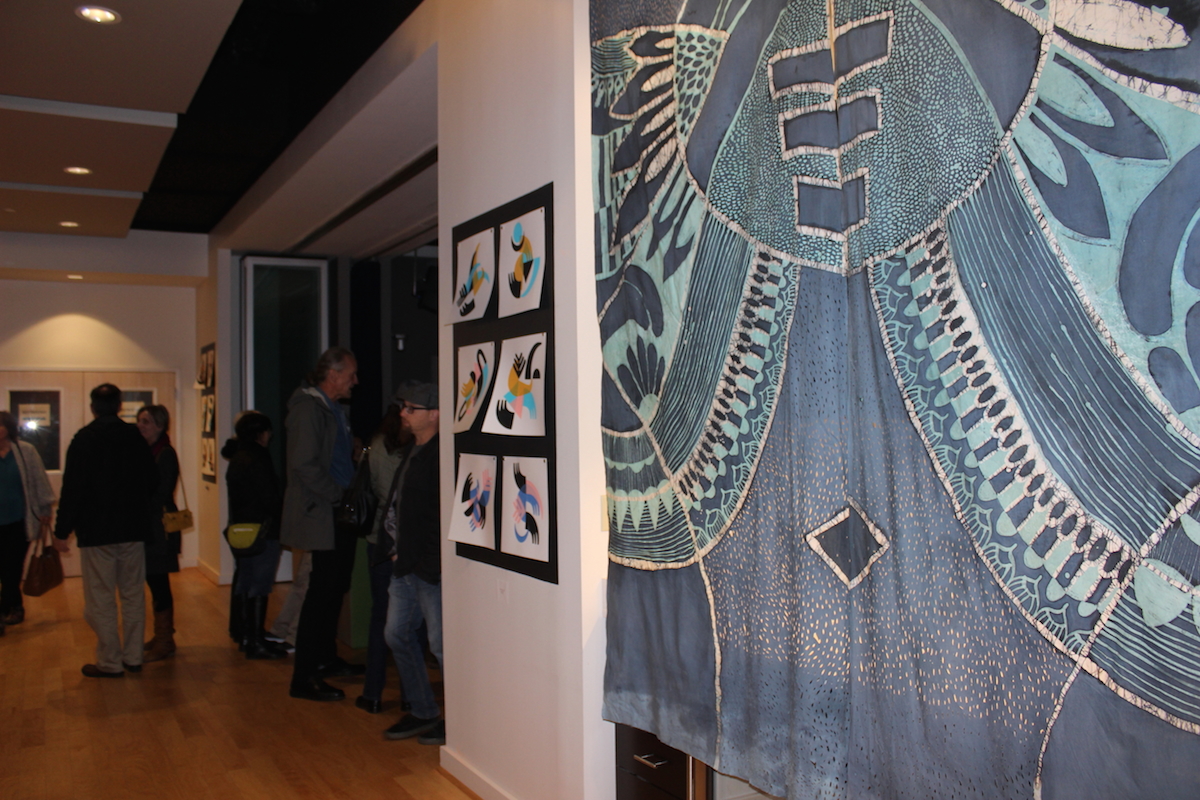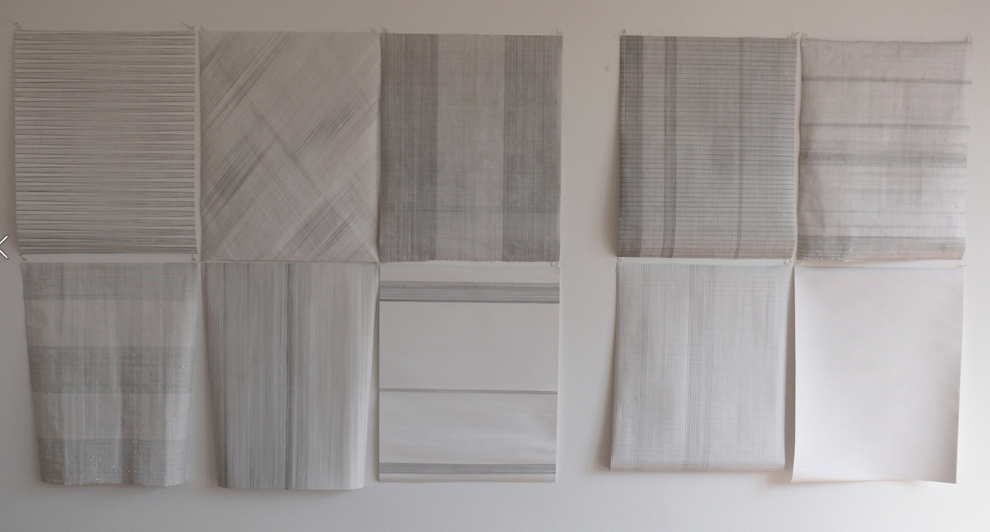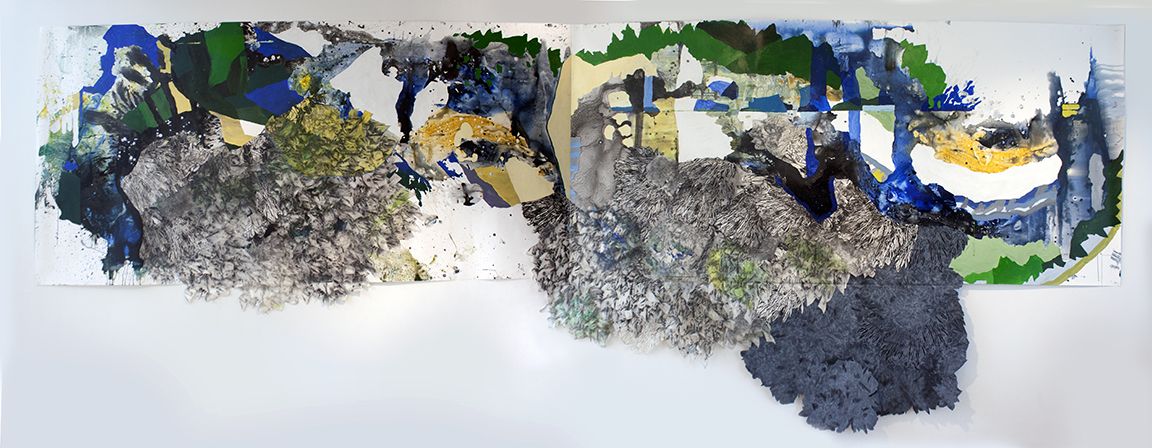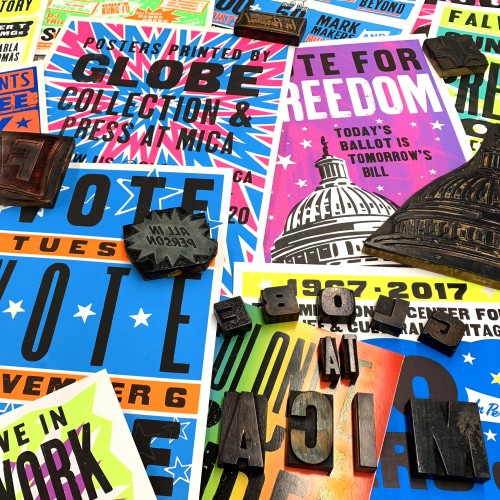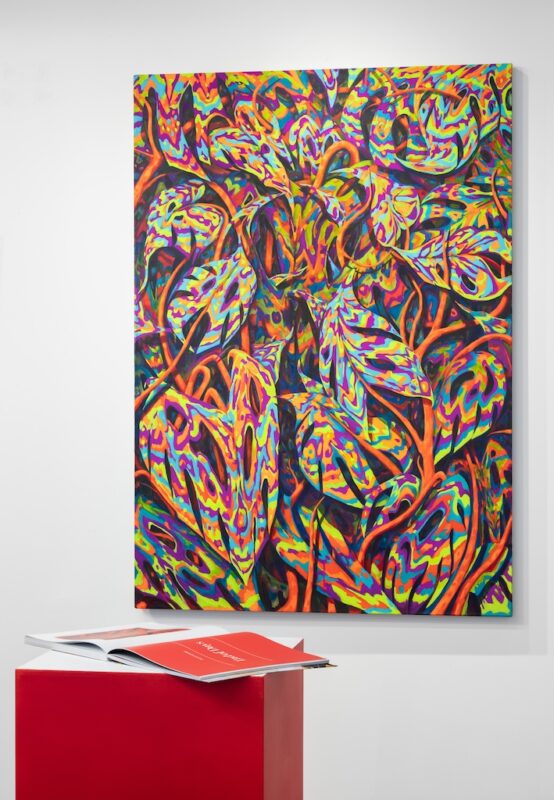Mike Iacovone reviews Katherine Mann: Feverland at Project 4 Gallery
Like the fervent state they suggest, Katherine Tzu-Lan Mann’s Fevereland paintings, on view at Project 4 in Washington, DC, are full of paradox. There are enormous paintings that are both delicate and brutal. There are small works that are trying to be bigger. There are works confined to rectilinear spaces, and some that break free and own the wall. Each painting pushes the viewer away to be seen as a whole, yet rewards them for investigating closely.

Mann’s paintings are composed of pieces of paper, some from woodcuts, etching or screenprints, as well as more traditional paint. Some parts come from ink dripped on to the surface, allowed to stain in alchemical reactions. Essentially, they’re all composed of disparate parts that react and respond to each other, and loosely coagulate into landscapes. In an interview, Mann explains that she begins with a plan and a color scheme, but the works evolve as each addition to the painting is a reaction and investigation to the previous. The work takes on relationships that are enhanced, or overshadowed by their neighbors, and while attention could be richly spent on the minutia, the grander composition can’t be ignored.
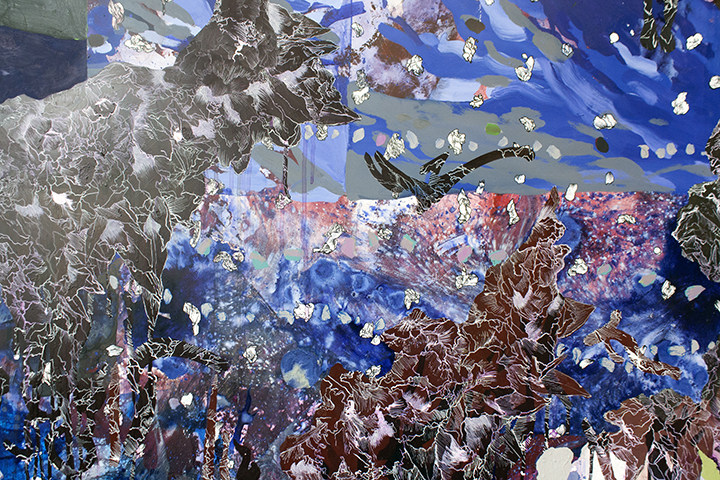
Considering how they are made, it could easily be understood that chance operations are employed and other factors of randomness, yet when speaking to the artist, it becomes clear that each piece is an exhaustive investigation, an accumulative labor where accumulation is also a tool of obfuscation.
There is a canny alchemy at play in these works. Much of Mann’s time spent building and layering is equally given to concealment and covering up. Considering the scale and production, Mann surprises the viewer when she confesses, “I destroy a lot of the process as well, in the end you only see maybe 10 or 20 percent of it.” It’s as if she’s creating a hybrid language of her media, but refusing to reveal the translation.
When interviewing Mann, she dwells on the relationships of the individual pieces of the paintings in proximity to each other. This reveals the crux of her investigations, and also reveals her inner dialogue. She’s a skilled and well versed painter, recently adding printmaking to her repertoire in an effort to find commonalities between the two. But it’s not just the relationships between the two media, but how each piece relates to the next, and how the sum of those relationships relate to the whole. That investigation of relationships is what drives Mann, and what keeps her work evolving.
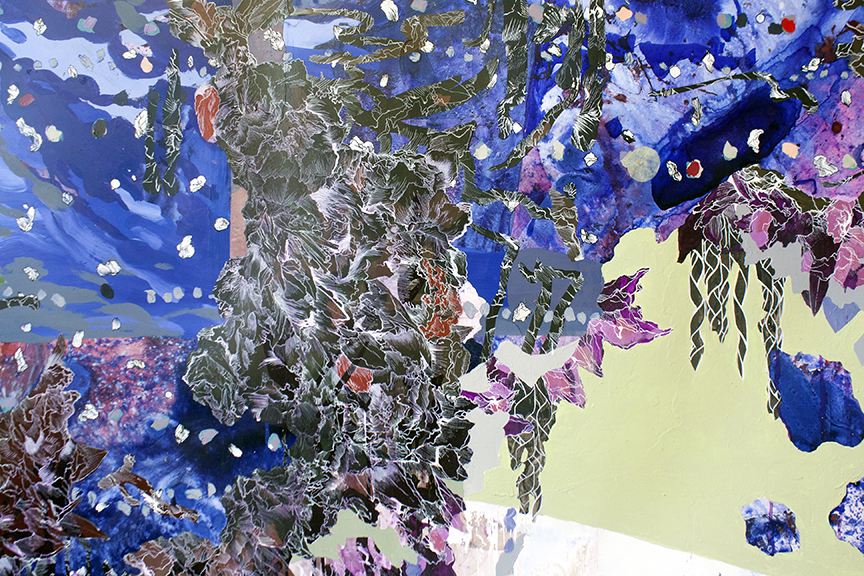
The smaller pieces in this show are not without aesthetic merit, yet are too restrictive for Mann. Her bigger paintings are the most rewarding. When viewing the larger works, the scale alone pushes the observer back, to try to take in all of it at once, and certainly there is an appeal for that, but the fine details pull the observer back in. When looking closely, there are details reminiscent of feathers and organic landscapes. However those delicate features are often butted up against heavy swatches of flat color, breaking any illusion of the third dimension, pushing the viewer back to consider how these relate to each other.

Mann is at her best when she’s not confined to the rectangle. Scaffold, the largest piece in the show at 95 x 260,” meanders down the wall in to imply an endless line of potential relationships. The delicate minute features juxtaposed with the maximalist patches of color adds tension, and breaks the facade of preciousness. This painting seems boundless, and in that sense, endless, which is a vehicle to consider what it would be like if it kept going, if it didn’t end, and if it filled not just the room, but your entire field of vision.
Feverland will be on view through November 29 at Project 4 Gallery in Washington, DC.
Author Michael Dax Iacovone is a DC based artist who works in photo, video, maps and installation.
